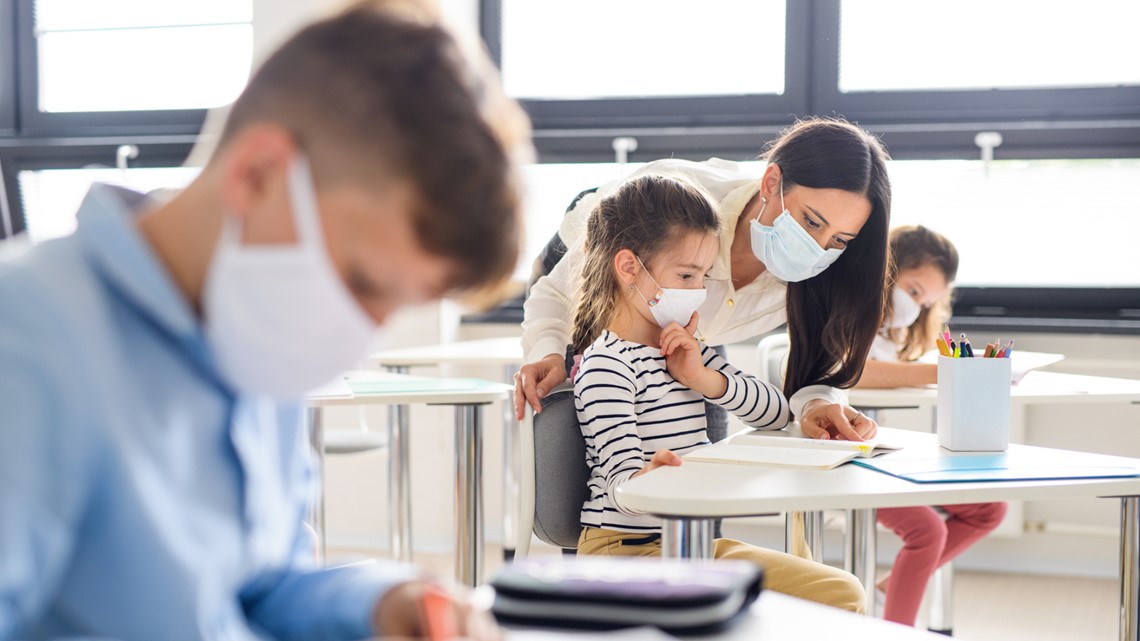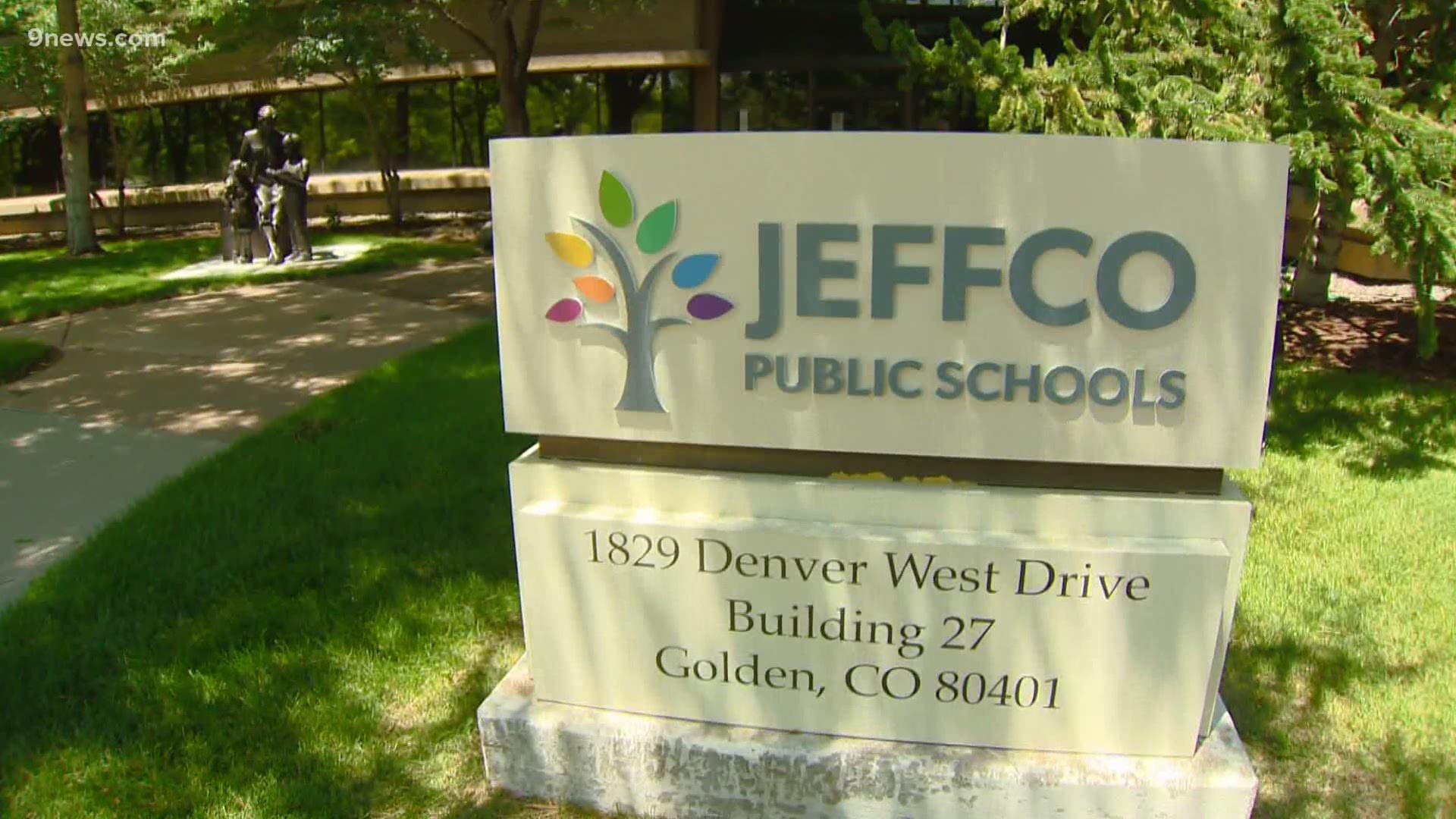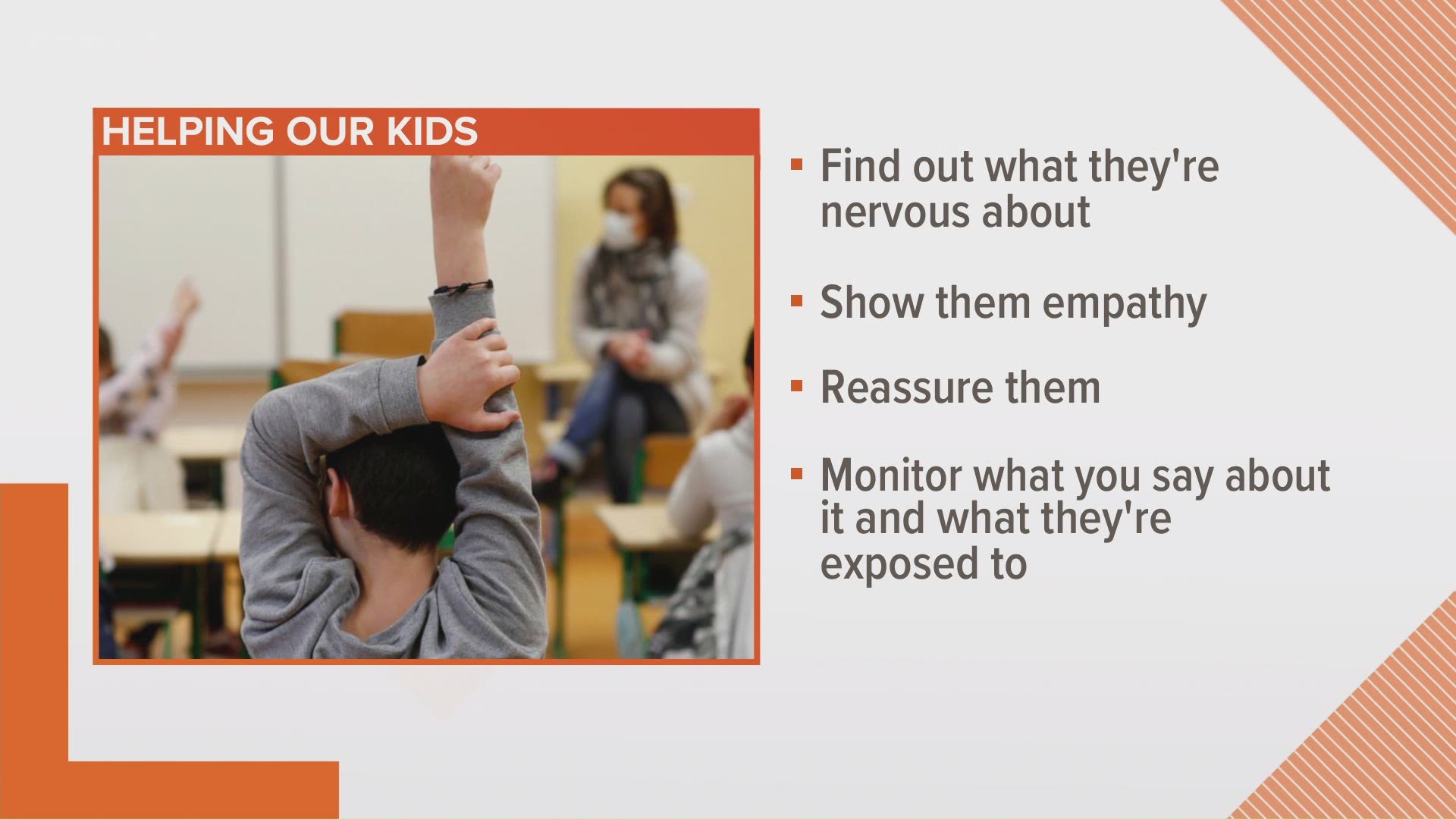JEFFERSON COUNTY, Colorado — Jefferson County Public Schools parents and teachers had many questions ahead of the Fall semester after the district released their plan last week.
Jefferson County Public Schools will open with 100% remote learning for a two-week period beginning Aug. 24 through Sept. 4, according to a note sent from the district last week.
On Sept. 8, the district plans to open elementary schools (PreK-5) with 100% in-person and 100% remote options for families. For secondary schools (grades 6-12), they plan on opening with a hybrid schedule providing alternating days (A/B groups) of in-person learning and a 100% remote option for families.
Here are some of the questions about the reopening plan that 9NEWS reporter Liz Kotalik took to JeffCo’s Chief Academic Officer, Matt Flores:
What did the district learn from remote learning in the Spring?
“Well, first and foremost, what we learned is that our teachers are amazing. It was very heartwarming and inspiring to see the dedication that they had to all of our students knowing that within just a few days…they were able to switch from in person learning to remote.”
“We also learned from the experiences of parents, of students and our teachers. We found that through the spring, there was some variability of implementation, and students were having different experiences depending on what class they were in. So we’ve learned from that to plan for this coming year.”
What does that mean? What will remote learning look like?
“I would say it will look similar, but better. We are setting up expectations, trainings and support so that all of our teachers, system-wide, will be using a common learning management system (often referred to as LMS). This is a way to organize delivery of content and instructional materials, [as well as] lessons and tools for kids to use. This way, when there’s a consistent learning management system across a grade-level, a classroom, or a school, the familiarity of how to use that resource is the same for kids in that grade-level or school. That will help teachers to organize in a common way that is familiar with students and also will be familiar for our parents. Consistency in a common learning management system is one thing we learned from thousands and thousands of bits of feedback we collected from our teachers, our community and our students.”
Will there be live interaction with teachers and students every day?
“We are expecting a pairing of synchronous (meaning at the same time) and asynchronous learning that kids can do at their own pace. There are expectations that kids can engage with our teachers in a synchronous environment every day. There will be expectations for asynchronous learning as well where kids can watch videos, learn through practice and independent opportunities for learning, and engage in both synchronous and asynchronous models.”
What will the live element look like?
“Sometimes that will be a small group or a one-on-one conversation… Sometimes that would be, I call it the Brady Bunch grid, when you see a whole bunch of little squares on your screen and it really represents the whole class. Other times, that might be live streaming and a teacher is presenting and there’s a video camera on them as they incorporate a presentation or slide show.”
What about students who struggle with online learning?
“Foundationally, in any instruction, whether it’s in-person, synchronous or asynchronous, it starts with the relationship between the teacher and the student. We are organizing structures to support building those relationships with students, because with any [model], this will be a new teacher. Of course, we’ll work towards in-person opportunities, but this will be the introduction. So, we are organizing around helping teachers and students to develop relationships from the outside.
“That’s part of the expectation for synchronous learning, small group and guided learning as well. Often times, if you were like me as a student, you would have been reluctant to raise your hand in a group of 30, but when it was a small group or individual conversation, that was a better time to answer questions, get feedback, and ask your own questions as a learner. So, we’ll have opportunities for both within JeffCo Public Schools to help our students be successful no matter what environment.”


How about kids with Individualized Education Plans (IEPs)?
“Those needs will absolutely be attended to in whatever learning environment whether it will be remote or in person.”
Calls to the Child Crisis Line have dropped since the pandemic began, mostly because teachers have always been the number one reporters of child abuse and neglect. Has this been discussed when coming up with the remote learning plan?
“At the school level, there will be outreach from each school site to all of our community. Moreover, many of our staff, whether it be councilors, principals, assistant principals, [or] teachers, do regular outreach to students. Sometimes outreach is a similar conversation to this, you know looking at each other through Zoom. Sometimes, that’s not the best way to do it, and there are times where we go seek out those families and try and find an opportunity to meet with them in a better environment or a closer environment. Of course, we would maintain all of the social distancing guidelines and wear a mask and make sure everyone is safe and secure according to public health guidelines, but outreach to students really comes back to what I said earlier. Relationships are the foundation of learning, and our teachers and staff and all of our schools are dedicated to that foundational need.”
Okay, let’s talk about parents. Monitoring kids during the remote learning process is not easy for many parents out there. It becomes more difficult if they both have full time jobs. Did the district take this into account when making the decision to begin the semester online?
“I can answer this from a couple of perspectives. Of course, as chief academic officers, we definitely heard that feedback across JeffCo. I also am a parent, and both my wife and I had that same experience at home.”
“It’s not something any of us wished for, but it is the situation that we are in. I know many of our schools across our district are considering what child care options are available. Sometimes that means partnering with private providers, we do have some opportunities within JeffCo for school-aged enrichment, which supports some childcare needs but that is something that we will be attending to prior to the start of school and look forward to finding more solutions from the parents and families in our community.”
What about parents who are physically back at offices or other work environments and cannot stay home to monitor their kids?
“Many times, organizations like YMCA or local childcare venders partner with our schools to ensure those opportunities are available. We do have some of those options within JeffCo. It’s our school-aged enrichment program, and some of our elementary schools have that on site. That allows for families, just like they would with other private providers, to pay for that service to support the needs of their children, and each day we continue to explore more opportunities because we know more about how important that is to our community, and we know what that means for working parents and our community as a whole.”
As someone who had to do this in the Spring, do you have any advice for parents who will be monitoring their kids’ remote learning from home?
“First, from a parent perspective, my wife and I took turns. One day she would check in with my daughter, and I would check in with my son. The next day we would flip that, just regularly engaging in the conversations: ‘What are you learning? Can you show me the products that you developed? How does your teacher share this information with you? What works for you? What more support do you need?’ Those are great conversations, whether in-person or remote, and those are beneficial to our students and really support what our great teachers do, and it gets parents an entry point into the learning that their kids are experience.”
Some JeffCo students and parents reported problems with technology in the Spring, whether it was their slow WIFI or their district-provided computers. What is being done about that issue for the Fall?
“Our IT, or information technology, department does a remarkable job at making sure student have the hardware they need. We’ve also partnered with local internet providers to ensure that parents have access to low cost internet and at times, if the need is great, we’ve accommodated individual needs through anything from WIFI hotspots, to connections, to comcast, a variety of different resources.”
“System-wide, we want to make sure all of our students have the hardware that they need to be successful, but our IT team also does a great job at the individual level to accommodate the individual needs of families to ensure that student can engage.”
We heard a lot of concerns from parents about the quality of online education. What are you doing to ensure students will be learning at a comparable level to in-person learning?
“Well as you know in your position, as many of our parents know in their positions, and as I know in my position, this is not an ideal way to engage in any type of relationship. With this being the ‘new norm’, so to say, our teachers are going to be well-equipped to organize and deliver content in this setting. I’m so proud of the work of our team to develop resources, tools and training to make sure teachers have the tools that they need to facilitate this environment. And we also have organized time that teachers come back before students come in to do facilitated training, get groups of teachers together to plan together, learn from each other, [and] share their experiences. Our central team will also be organizing training on synchronous learning, asynchronous learning, [and] how to use an electronic management system. In addition to using assessments to plan for academic expectations so that we meet each kid at their own individual level, while our teachers did a remarkable job this past spring on organizing and delivering content, we want to take time to be very thoughtful in how those students are learning. We have district-wide assessments that we’ll use soon after school starts, and teachers use formative, in-class assessments to see how kids are doing to determine academic milestones defined by the Colorado Academic Standards. Those tools will be matched with our proficiency scales to help kids understand the pathways to mastering Colorado academic standards. So, teachers will have the tools, they will have the training, they will have the resources, and we all know they already have the skill.”
When in-person, hybrid instruction begins for secondary school teachers after Labor Day, will educators be expected to teach both online and in-person?
“For our secondary levels, 6-12, there’s a hybrid expectation where it’s a mix of in-person and remote learning, and that would be facilitated by teachers in the building, but that will vary per course, and it sometimes will be a group of students who only want remote, and they will be pared with a group of teachers that will be teaching remotely. Sometimes, it will be the same teacher that’s organized to be in-person with you on a hybrid schedule. [They] will also facilitate your asynchronous, remote learning when you are outside the schools.”
If teachers have mild symptoms of COVID-19 and want to get a test, will they need to use sick time while they wait?
Flores told us to ask the district this question. Spokesperson Cameron Bell said, “Any time a staff member misses work due to illness, they have to use sick time. If they have symptoms, they cannot be at school (work).”
What specific criteria needs to be met for the district to be comfortable to moving to the in-person/hybrid learning options?
Flores told us to ask the district this question. Spokesperson Cameron Bell said, “We will follow public health partner guidelines and direction. I am not certain there are the exact specific criteria like you are asking for - JCPH might have more along that front. And as you know, where we currently are, Safer at Home, allows for our new plan of returning to in-person (elementary) and hybrid (middle and high) (with remote-only option at all) on September 8. If we stay at Safer at Home, then we will be comfortable returning to this model at that time. Per this graphic below that was in our letter yesterday, when there is an official change in the state and county status, we will adjust our plans.”
SUGGESTED VIDEOS: It Takes A Village


